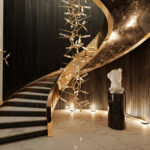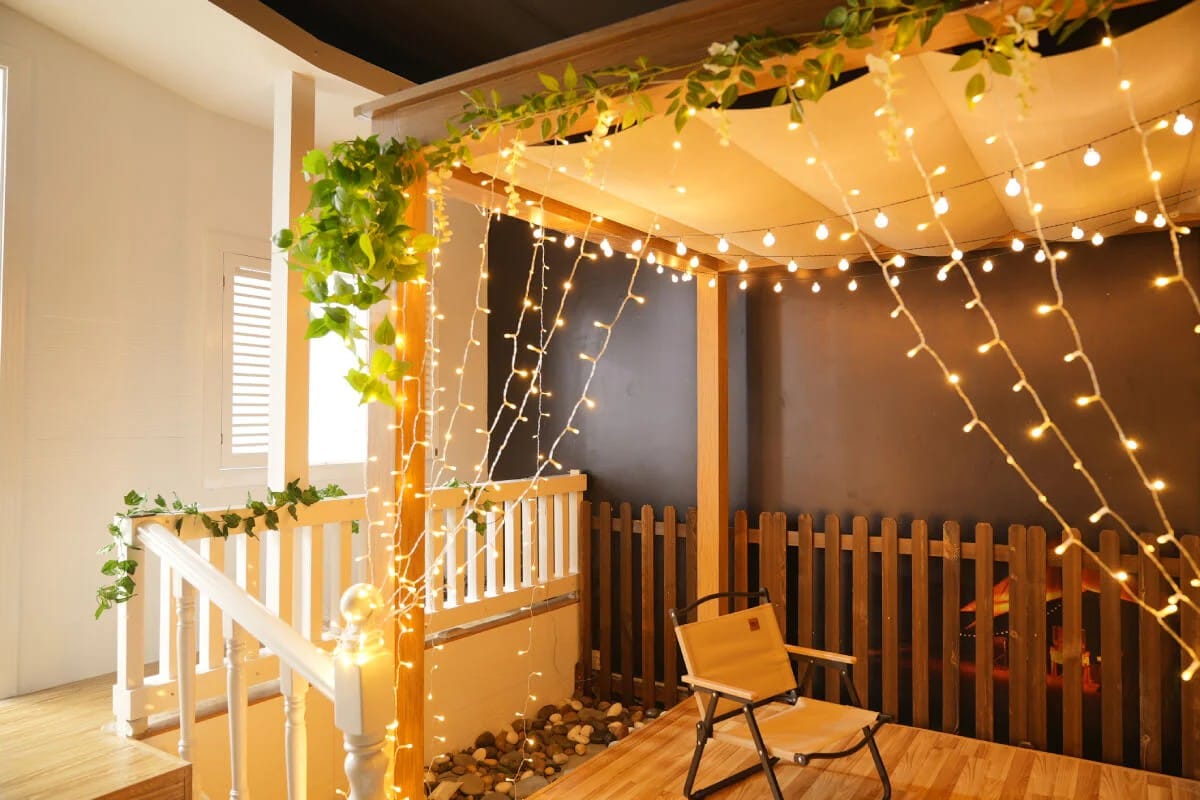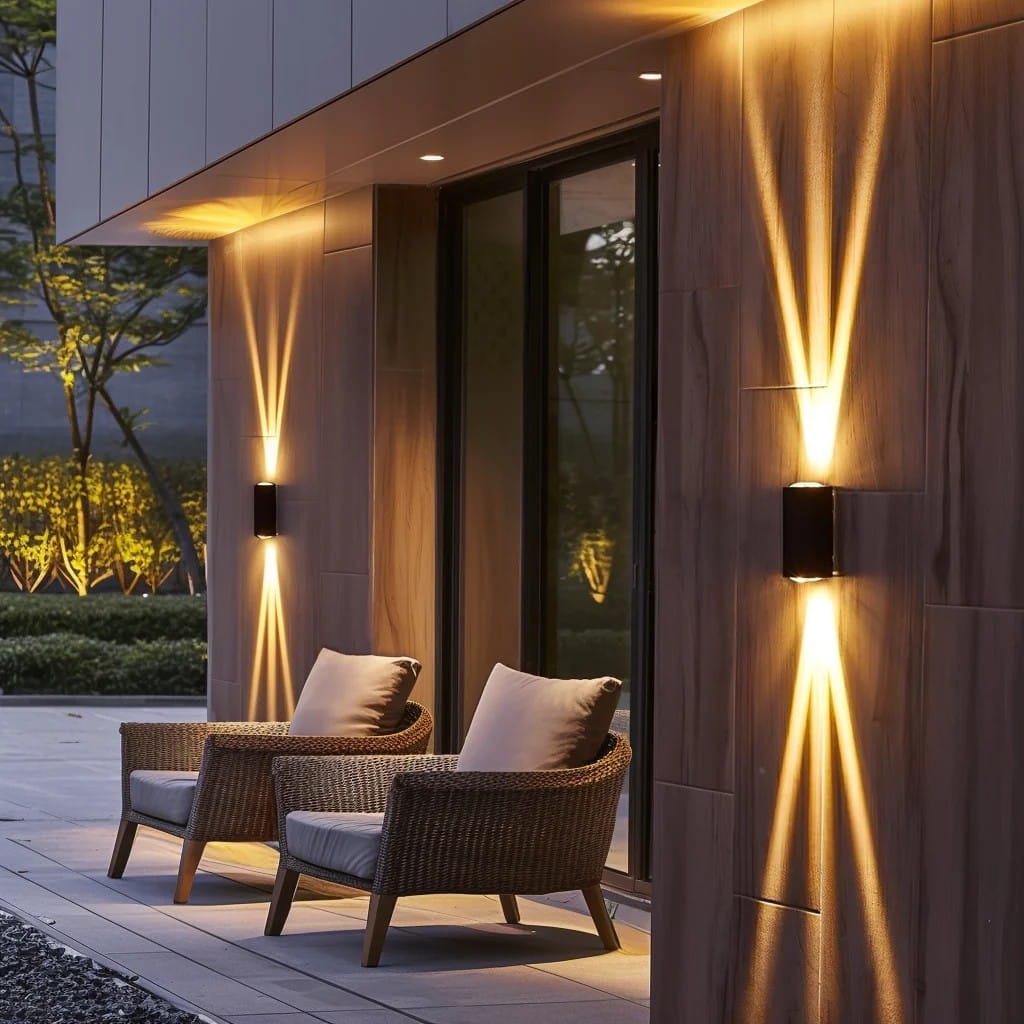
Light Space Design in UAE for Villas and Other Spaces
Table of Contents
Let’s be clear!
We swim in a sea of screens. From the moment we wake to the instant before sleep,
Our eyes often flit from the insistent glow of a smartphone to the broader expanse of a laptop, perhaps to the immersive world of a tablet or television.
It’s a life lived in emitted light, frequently harsh, invariably demanding our attention.
It seems it’s no longer sufficient for a space to be merely visible, to be functionally lit.
We now crave spaces that feel right, environments that breathe, that resonate with our internal states, that respond to us.
This yearning is where the sophisticated discipline of light space design truly begins its work, particularly in a country as architecturally and culturally rich as the UAE.

Light Space Design
At its heart, light space design transcends the casual act of “dispelling darkness”. It is the strategic and thoughtful manipulation of light,
As one exploration into the topic succinctly puts it:
“Light space design is not just about adding more light; it’s about understanding how light interacts with space and how it can be manipulated to evoke emotions and influence behavior”.
This understanding forms the critical foundation upon which all successful and impactful lighting Installation schemes are built.
Several foundational strategies are consistently recommended for achieving bright, inviting, and spacious-feeling interiors.
Using light colors for walls and furniture is a common tip. This isn’t merely about reflecting more lumens.
Indeed, lighter hues possess a psychological power, creating a sense of expansiveness and airiness.
This effect is particularly valuable in dense urban settings or when aiming to make the rooms within a villa, which might be spatially defined, feel grander and more open.
The incorporation of mirrors, for example, is another classic technique.
Mirrors act as light amplifiers, reflecting natural and artificial light back into a room, effectively doubling the perceived presence of light sources and enhancing the illusion of depth and spaciousness.
Finally, the concept of layering lighting – using a combination of ambient, task, and accent lighting – is here to provide versatility and depth.
Thus, lighting is often described as a “cornerstone of interior design”, not an ancillary decorative element but a fundamental force that shapes how we experience and interact with every aspect of a built space.
This makes nuanced, human-centric light design more critical than ever before.
It acts as a tangible, comforting counterpoint to the often ephemeral and demanding glow of our digital devices.
Thoughtfully designed physical spaces, particularly those where light is sculpted to enhance comfort, improve focus, and foster a connection to the tangible world.
For architects and designers in the UAE, light space design moves beyond mere aesthetics.
You can consider it as an essential tool for promoting holistic well-being and forging a deeper, more meaningful connection between people.
Architectural Lighting Design with Light and Space
Lighting design is a fascinating discipline precisely because it stands at the confluence of rigorous science and expressive visual experience.
Architectural lighting design, in its most sophisticated form, consciously aims to: “balance the art and the science of lighting to create mood, visual interest and enhance the experience of a space or place whilst still meeting the technical and safety requirements”.
This balance is key to transforming mere buildings into evocative environments.
Understanding the “properties of light and how they’re used in architecture” is fundamental.
This involves a grasp of Light Color, where the architectural standard for white light is often benchmarked against “daylight at noon during the month of June”.
This reference point is not arbitrary; it seeks to connect artificial illumination with the perceived vitality and clarity of our most powerful natural light source.
Furthermore, designers must be conversant with the methods of Measuring Light. These include:
- Luminous Flux: The total amount of light emitted by a source, measured in lumens (lm).
- Luminous Intensity: The amount of light emitted in a particular direction, measured in candelas (cd).
- Illuminance: The amount of light falling on a surface, measured in lux (lx) or foot-candles (fc).
- Luminance: The perceived brightness of a surface, or the amount of light reflected or emitted from it, measured in candelas per square meter or foot-lamberts (fL).
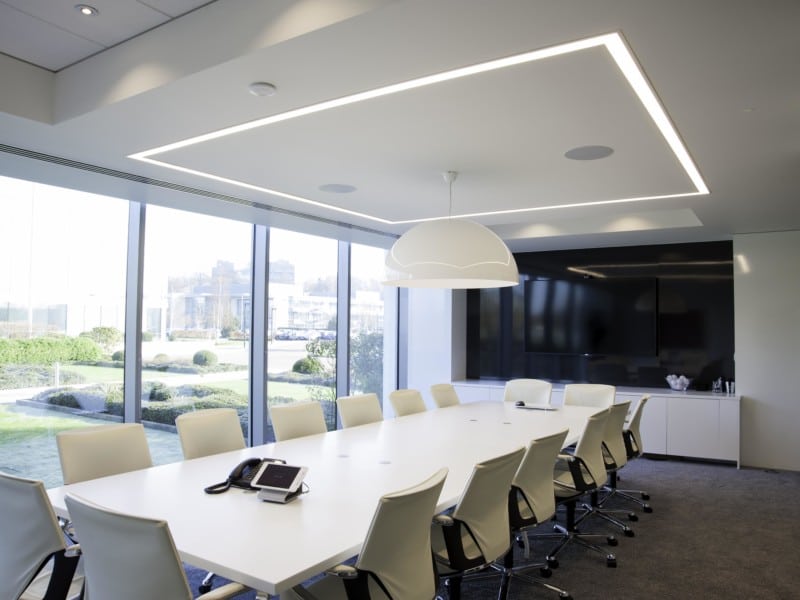
Why You Should Seek Light Space Design in the UAE?
The unique confluence of factors present in the United Arab Emirates elevates the importance and complexity of light space design.
The country’s intense desert climate, characterized by abundant and often harsh sunlight, demands exceptionally careful management of natural light
The goal here is to avoid excessive heat gain and debilitating glare.
Simultaneously, a lifestyle that frequently seeks to blur the boundaries between indoor comfort and outdoor enjoyment necessitates lighting solutions that enhance exterior living spaces.
Added to this is the UAE’s globally recognized penchant for luxurious finishes, architecturally iconic statements, and cutting-edge design.
Finally, a rapidly growing national commitment to sustainability and green building practices introduces another layer of requirements.
This pushes for energy-efficient lighting solutions and environmentally conscious design strategies.
These elements – climate, lifestyle, luxury, and sustainability – collectively create a challenging yet exceptionally exciting environment for lighting designers.
What About Natural Light in the UAE?
Natural light is consistently lauded as providing “the greatest quality of light, rated 100 CRI” (Color Rendering Index), meaning it allows us to perceive colors most accurately.
Beyond its visual fidelity, its benefits for psychological and physical health are extensive and well-documented.
Strategies to maximize its presence in buildings include the incorporation of large windows, strategically placed skylights, and open-concept floor plans.
These approaches are increasingly common in UAE homes, villas, offices, and many commercial buildings.
Effective daylighting not only creates a visually stimulating and productive environment for building occupants but can also lead to significant energy savings.
However, you should acknowledge and manage potential drawbacks, particularly in the UAE’s intense climate.
Uncontrolled daylight can lead to the deterioration of interior materials due to UV exposure and can substantially increase the cooling load on HVAC systems.
Emerging Trends and Practical Considerations in Lighting
The field of lighting design is dynamic, constantly evolving with new technologies and design philosophies.
Several emerging trends are shaping how we illuminate spaces in the UAE and globally :
- Smart Lighting Systems: These are becoming ubiquitous, prized for their energy efficiency, adaptability (allowing control over intensity, color, and patterns), and integration with broader building automation.
- Biophilic Lighting Design: This approach seeks to connect indoor spaces with the natural world by mimicking natural light patterns, incorporating fixtures made from natural materials, and integrating lighting with indoor greenery.
- Retro-inspired Lighting: A nostalgic trend that combines the charm of mid-20th-century design (bold geometrics, soft curves, classic materials) with modern lighting technology.
- Interactive Lighting Designs: These systems engage users by responding to movement, touch, or sound, allowing for personalized and dynamic luminous environments.
- Material Innovation: A growing focus on using sustainable, recycled, and innovative materials in the construction of lighting fixtures themselves, blending environmental consciousness with aesthetic appeal.
- Immersive Lighting Experiences: Utilizing light not just for visibility but to evoke strong emotions, create distinct atmospheres, and offer profound sensory experiences.
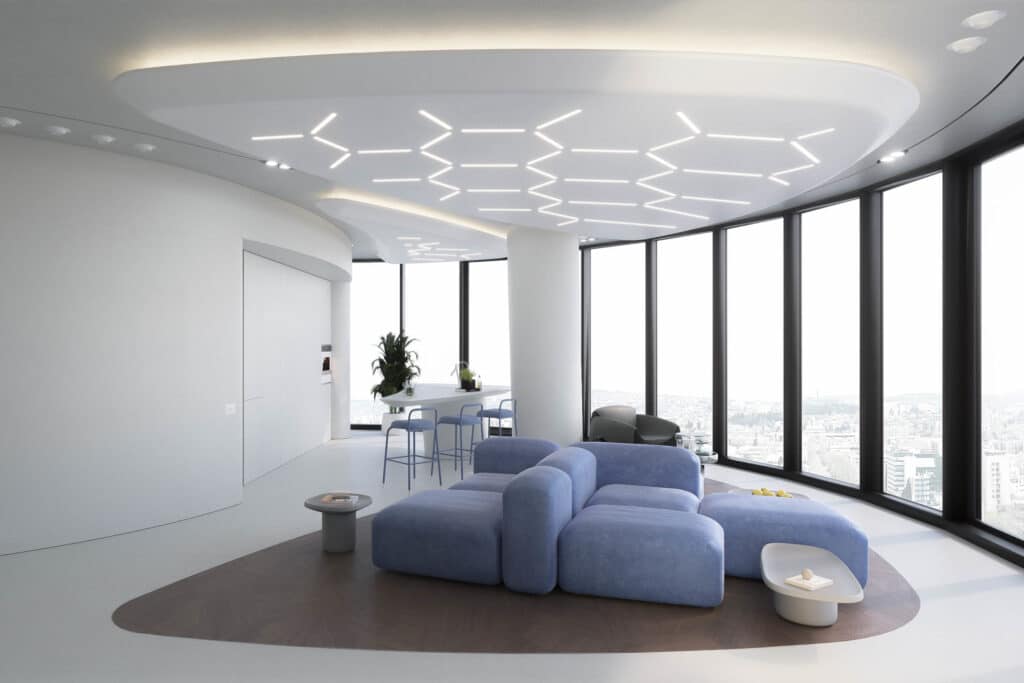
Light Space Design for UAE Villas
A dominant theme in contemporary UAE villa design is the sophisticated and often fusion of modern architectural aesthetics with enduring traditional Arabic elements.
Lighting is not merely an accessory in this blend; it is a critical medium, a design tool that can accentuate historical motifs and highlight traditional craftsmanship.
Light space design dubai villas can vary, but some draw from Neoclassical influences.
In other words, they feature “soaring columns and large archways,” which inherently convey a sense of grandeur.
Such architectural statements demand lighting strategies that respect and enhance this scale and dignity.
An interesting observation is how a pale exterior color reflects natural light, creating a glowing effect during golden hour.
The interplay of light, both natural and artificial, with carefully chosen materials is central to the villa’s ambiance.
Materials such as natural stone, rich woods, intricately carved details, and strategically placed reflective surfaces come alive under well-considered illumination.
Light can reveal the subtle textures of stone, cast evocative shadow patterns from Mashrabiya screens, add warmth to wood finishes, or create sparkling highlights on metallic accents.
In the design of contemporary UAE villas, lighting frequently serves as a sophisticated and often subtle bridge.
It connects a deep reverence for historical and cultural elements, such as traditional geometric patterns, with distinctly modern aspirations.
These aspirations are characterized by sleek architectural lines and expansive open-plan living.
This thoughtful use of light helps to create a unique and highly sought-after “contemporary heritage” aesthetic.
Lighting Courtyards, Gardens, and Facades in the UAE
The UAE’s climate, particularly during the cooler months, and the prevailing lifestyle place a strong emphasis on outdoor living.
Villa courtyards, gardens, and terraces become extensions of the indoor living space, and landscape lighting is important for safety and enjoyment after sunset.
Effective techniques for illuminating these outdoor sanctuaries include:
- Creating Ambiance: Soft, warm lighting to foster a relaxing and inviting atmosphere for evening gatherings or quiet contemplation.
- Highlighting Features: Using focused light to draw attention to key architectural elements of the villa, prized trees or plants, water features, sculptures, or specific landscape designs.
- Ensuring Safety and Navigation: Providing adequate illumination for pathways, steps, and changes in level.

Outdoor Lighting Fixtures for UAE Villas
Fixtures must be robust and specifically designed to withstand the region’s challenging conditions including intense heat, high UV exposure, and humidity.
A diverse palette of outdoor lighting fixtures is typically employed to achieve amazing lighting effects:
Pathway Lights
Bollards or low-level fixtures to define and illuminate walkways and driveways. “Modern Stainless Steel Bollards with solar and LED combo” are cited as a durable option for the UAE heat.
Spotlights & Uplights
Used to accentuate trees, statues, feature walls, or the villa facade itself, creating dramatic effects. “Adjustable IP65-rated LED Spotlights with remote control and color change options” offer versatility just like exterior pendant light fixtures.
Wall Lights & Sconces
If you put them on perimeter walls or fences, these lights help define spaces, provide ambient light, and can add decorative flair. “Moroccan-inspired garden wall sconces” can blend tradition with durability. All this makes Decorative Wall Lights a great option for many villa owners.
String Lights & Fairy Lights
Ideal for creating a festive, cozy, or romantic atmosphere, often draped over pergolas, gazebos, or around trees and bushes.
Deck & Step Lights
Recessed or surface-mounted fixtures to illuminate stairs, deck edges, and terrace perimeters for safety and a sleek, modern look.
Lanterns & Portable Lamps
Such fixtures can easily offer flexibility for specific events or to add movable points of interest inside villas.
Facade lighting
Front lighting plays a significant role in enhancing the architectural grandeur and prestige of UAE villas, especially at night.
It’s noted how “subtle lighting accents frame pathways and highlight landscape design at night,” contributing to the villa’s overall visual impact and perceived value.
Final Thought
The journey of light in the UAE, from the first elemental sunbeam that pierced the fabric of a desert tent to the intricate LEDs that crown a modern skyscraper, has always been intertwined with the culture inside the country.
In this rich and amazing land of bold visions, rapid transformations, and a deep respect for heritage, light space design has evolved into far more than a mere architectural discipline.
Here at Bink Lighting, we believe lighting design is a powerful narrative tool.
It tells compelling stories of cultural continuity and relentless innovation, of private, tranquil sanctuaries and vibrant, bustling public squares.
The process of designing outdoor lighting, from the initial consultation to the development phase, is critical for achieving a successful and lasting outcome.
FAQs
What are the first steps I should take when planning lighting design for my new villa in the UAE?
The initial and most crucial step is to engage with lighting design professionals or experienced interior designers as early as possible in your project timeline.
How can office lighting in the UAE truly improve employee productivity and well-being?
Office lighting in the UAE can significantly boost productivity and well-being by prioritizing human-centric principles.
What are the key lighting trends for commercial spaces like retail and hotels in Dubai and Abu Dhabi?
Key lighting trends in UAE commercial spaces focus on creating immersive experiences and reinforcing brand identity.
Are smart lighting systems worth the investment for homes and businesses in the UAE?
Yes, for most applications in the UAE, smart lighting systems represent a worthwhile investment. The benefits are multifaceted and include energy savings through efficient LED sources.
What are the main differences between Estidama and LEED regarding lighting requirements in the UAE?
Both Estidama (Abu Dhabi’s Pearl Rating System) and LEED (Leadership in Energy and Environmental Design) are green building certification systems that heavily influence lighting design in the UAE, but they have key differences.
What are the emergency lighting regulations I need to be aware of for commercial buildings in the UAE?
Emergency lighting regulations in the UAE, primarily enforced by entities like Dubai Civil Defense (DCD) and detailed in the UAE Fire and Life Safety Code of Practice, are critical for occupant safety.


